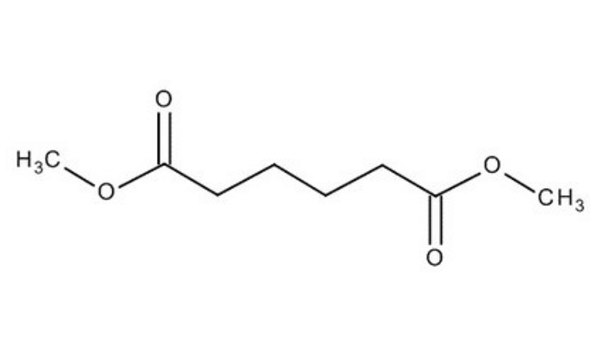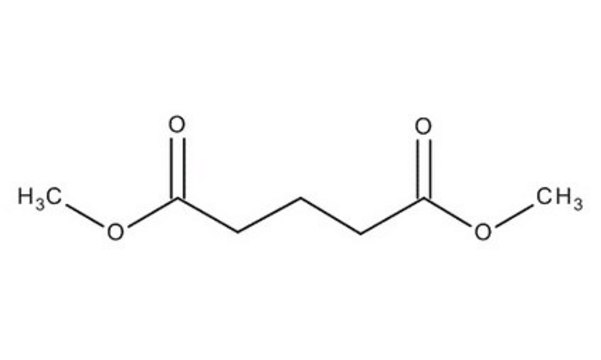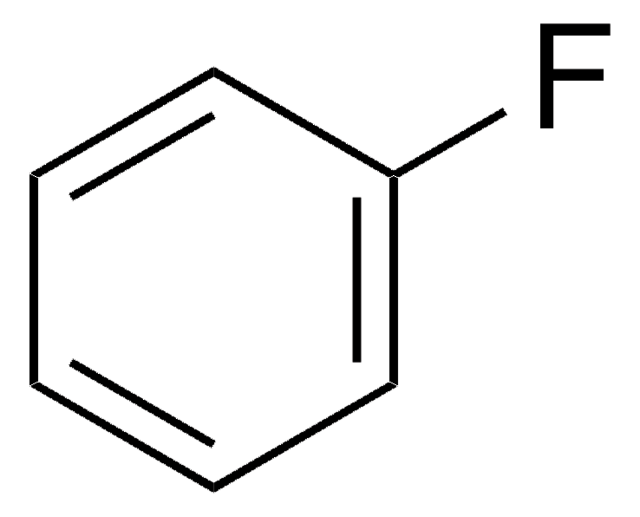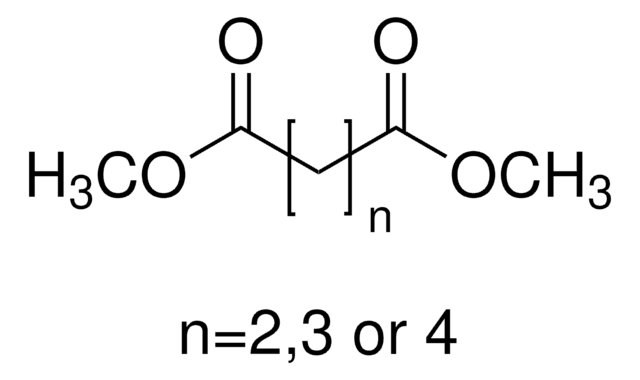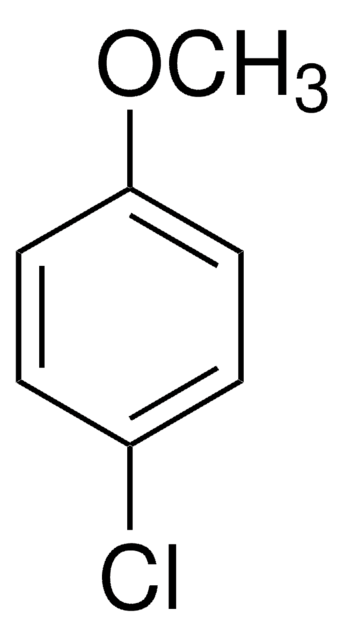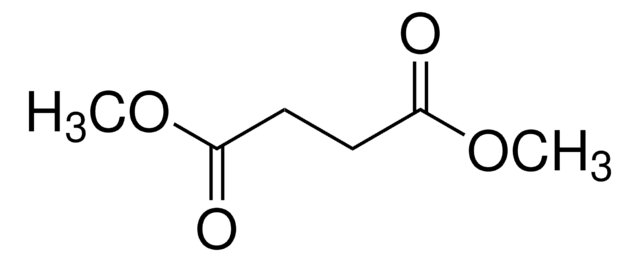186252
Dimethyl adipate
≥99%
Synonym(s):
Adipinic acid dimethyl ester, Dimethyl 1,6-hexanedioate, Dimethyl hexanedioate
Sign Into View Organizational & Contract Pricing
All Photos(1)
About This Item
Linear Formula:
CH3OCO(CH2)4COOCH3
CAS Number:
Molecular Weight:
174.19
Beilstein:
1707443
EC Number:
MDL number:
UNSPSC Code:
12162002
PubChem Substance ID:
NACRES:
NA.23
Recommended Products
vapor pressure
0.06 mmHg ( 20 °C)
Quality Level
Assay
≥99%
form
liquid
autoignition temp.
680 °F
expl. lim.
8.1 %
refractive index
n20/D 1.428 (lit.)
bp
109-110 °C/14 mmHg (lit.)
mp
8 °C (lit.)
density
1.062 g/mL at 20 °C (lit.)
SMILES string
COC(=O)CCCCC(=O)OC
InChI
1S/C8H14O4/c1-11-7(9)5-3-4-6-8(10)12-2/h3-6H2,1-2H3
InChI key
UDSFAEKRVUSQDD-UHFFFAOYSA-N
Looking for similar products? Visit Product Comparison Guide
Application
- Micro/nanoencapsulation for cool thermal energy storage: Dimethyl adipate has been encapsulated into a polymer shell, improving its thermal properties and making it suitable for cool thermal energy storage applications (Trivedi & Parameshwaran, 2022).
- Sustainable production via non-heme iron (III) catalysis: A method for producing dimethyl adipate through oxidative cleavage of catechol using non-heme iron (III) catalysts highlights an environmentally friendly approach (Jastrzebski et al., 2015).
- Boosted nitrilation for adiponitrile production: The development of bimetallic oxide catalysts for the nitrilation of dimethyl adipate to adiponitrile shows enhanced activity and selectivity, important for industrial applications (Guo et al., 2023).
Storage Class Code
10 - Combustible liquids
WGK
WGK 1
Flash Point(F)
230.0 °F - closed cup
Flash Point(C)
110 °C - closed cup
Personal Protective Equipment
dust mask type N95 (US), Eyeshields, Gloves
Choose from one of the most recent versions:
Already Own This Product?
Find documentation for the products that you have recently purchased in the Document Library.
S A Simpson et al.
Archives of toxicology, 79(4), 224-230 (2005-02-04)
We have previously developed a rat nasal explant system for investigating upper respiratory tract toxicity, and the aims of this study were to determine whether heat shock protein (HSP) 70 is induced in this model following exposure to carbon tetrachloride
Naz Chaibakhsh et al.
Biotechnology journal, 5(8), 848-855 (2010-07-16)
Dimethyl adipate (DMA) was synthesized by immobilized Candida antarctica lipase B-catalyzed esterification of adipic acid and methanol. To optimize the reaction conditions of ester production, response surface methodology was applied, and the effects of four factors namely, time, temperature, enzyme
M A Medinsky et al.
Toxicology, 160(1-3), 165-172 (2001-03-14)
Inhalation is a common route by which individuals are exposed to toxicants. The air contains a multitude of gases and vapors that are brought into the respiratory tract with each breath. Depending upon the physical and chemical characteristics of the
A microscopic and ultrastructural evaluation of dibasic esters (DBE) toxicity in rat nasal explants.
B A Trela et al.
Experimental and molecular pathology, 56(3), 208-218 (1992-06-01)
Dibasic esters (DBE) solvent has been demonstrated to induce a mild degeneration of the olfactory, but not the respiratory epithelium of the rat nasal cavity following a 90-day inhalation exposure. Previous work has demonstrated that acid phosphatase release is a
Mar Serrano-Arnaldos et al.
Journal of biotechnology, 325, 91-99 (2020-11-15)
Esters from branched alcohols and dicarboxylic linear acids are widely used as lube bases due to their good performance at low temperatures. This work proposes a new process to synthesize bis(2-ethylbutyl) adipate and bis(2-ethylbutyl) sebacate by using the lipase-based catalyst
Our team of scientists has experience in all areas of research including Life Science, Material Science, Chemical Synthesis, Chromatography, Analytical and many others.
Contact Technical Service